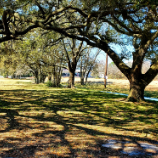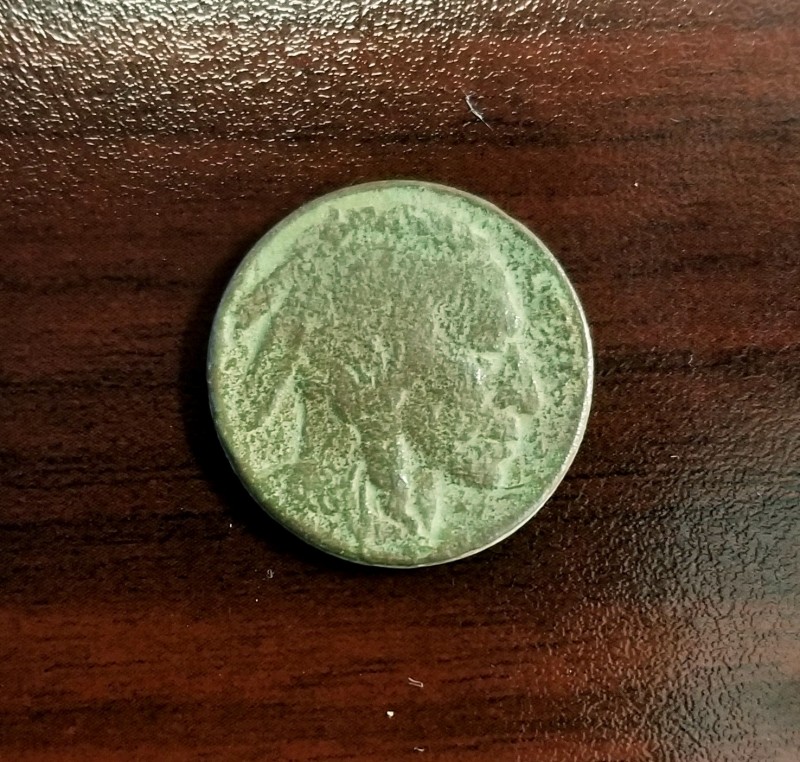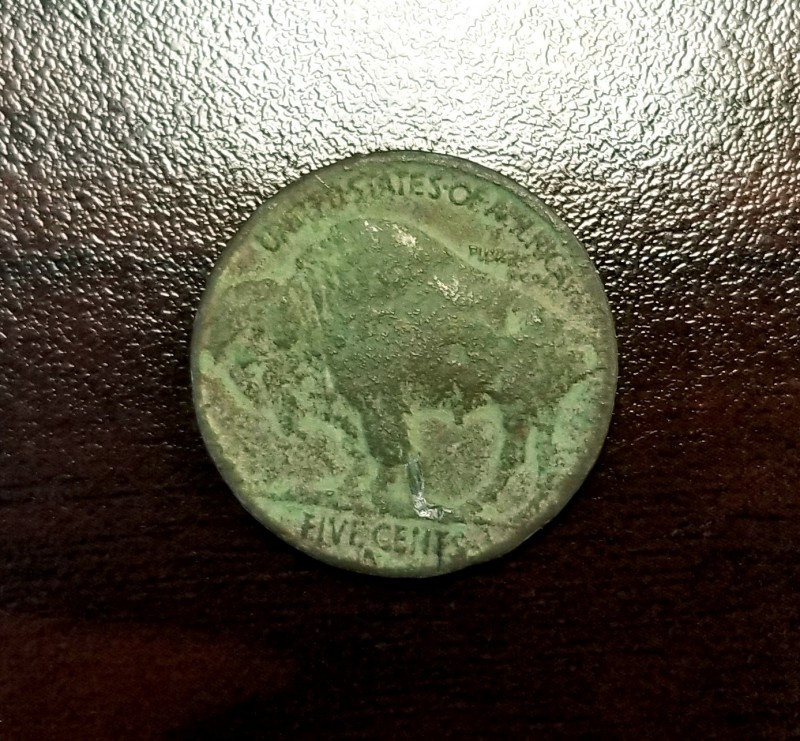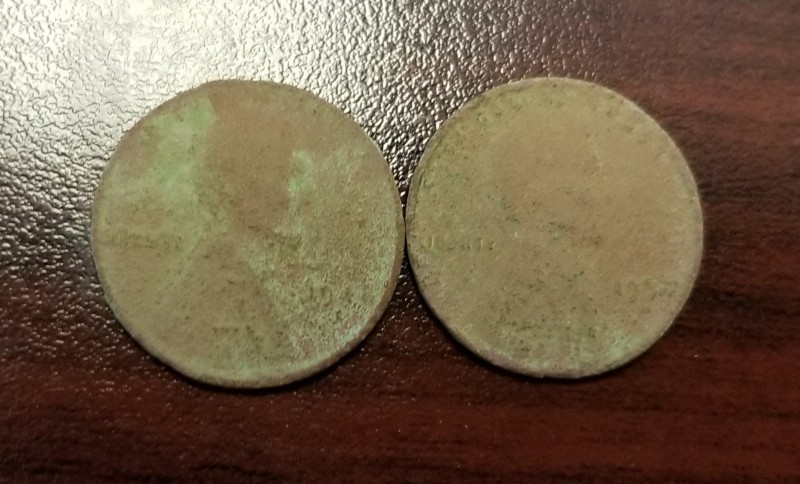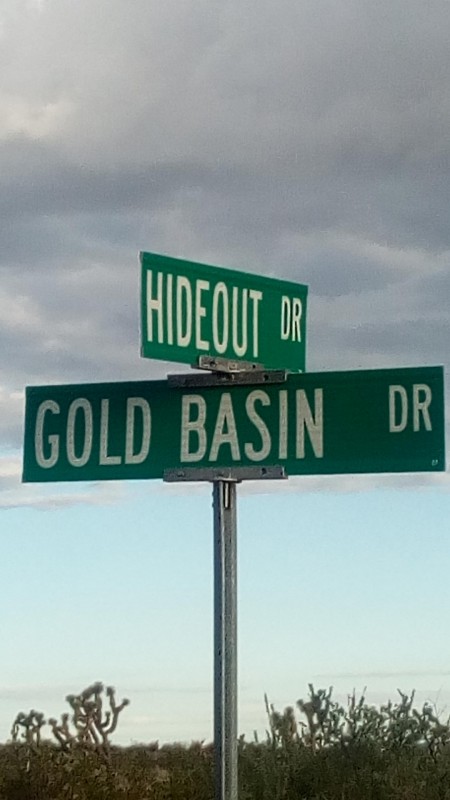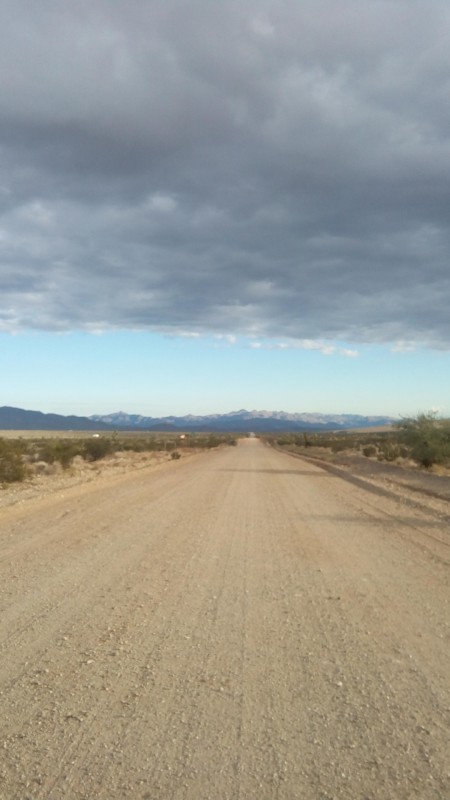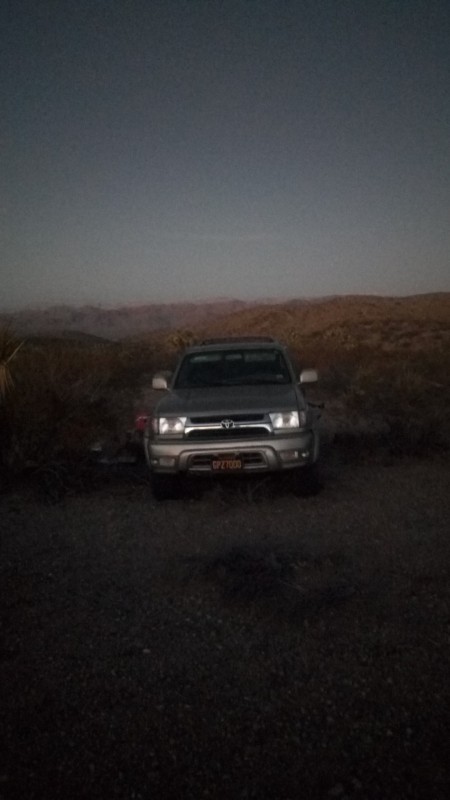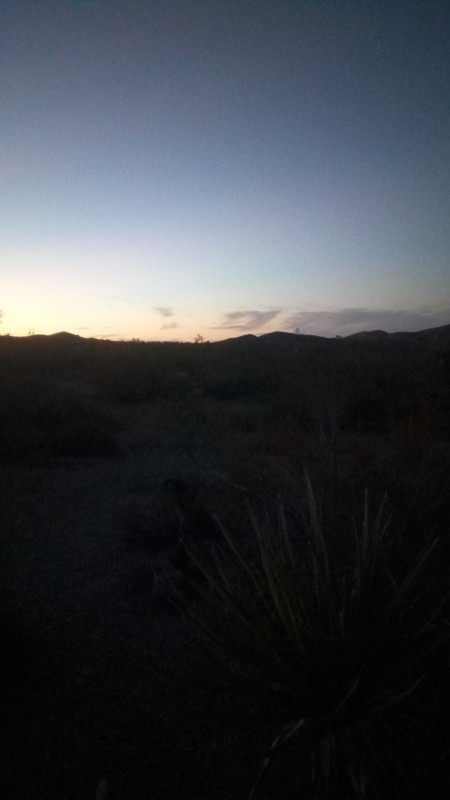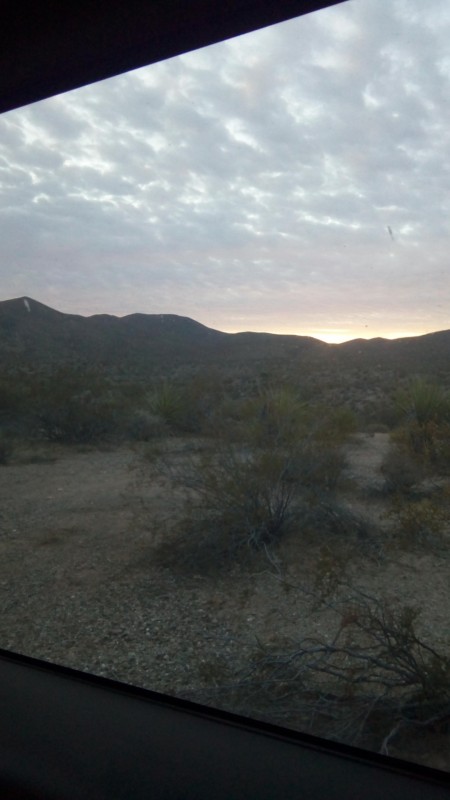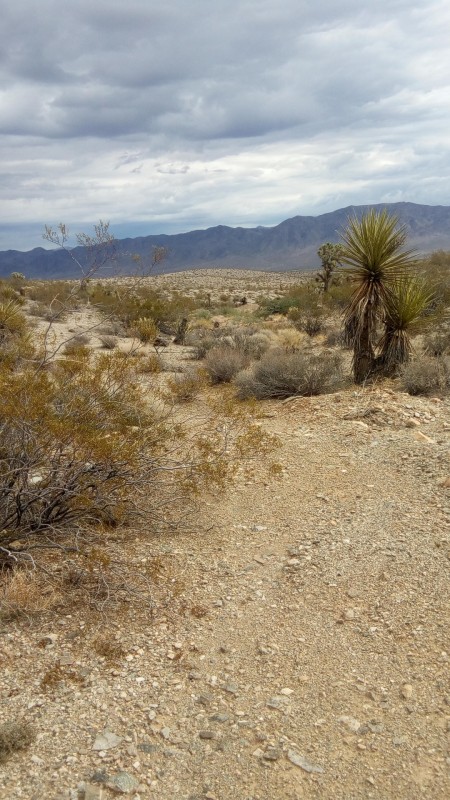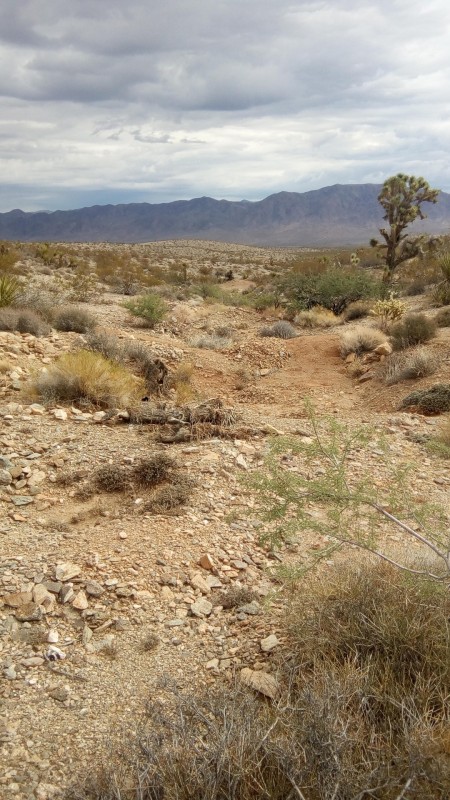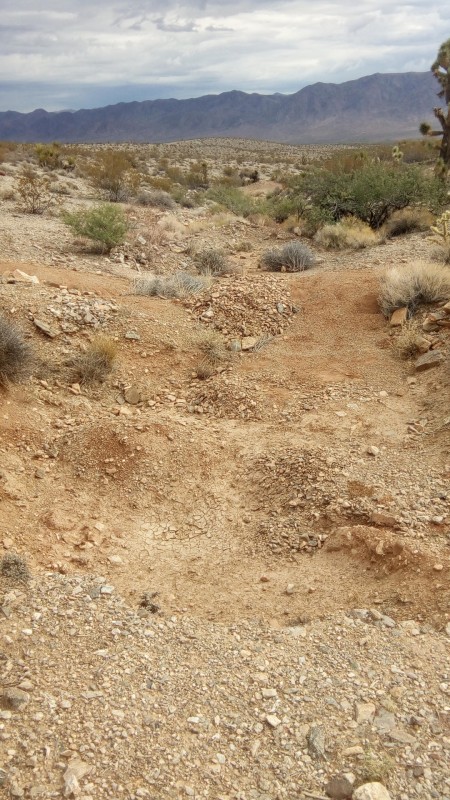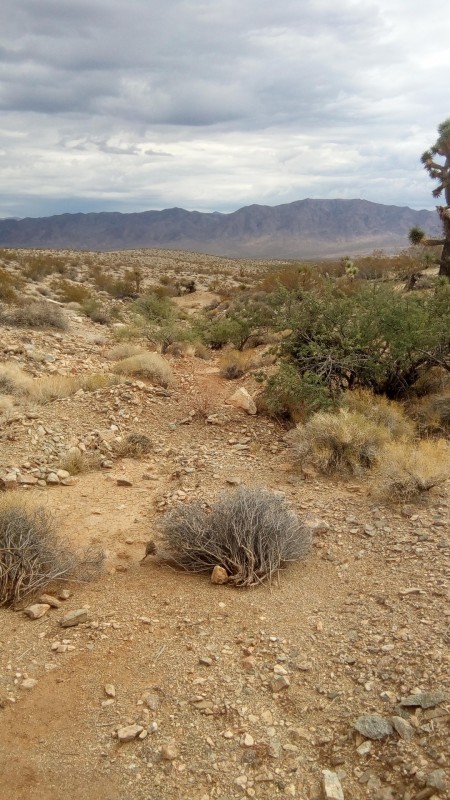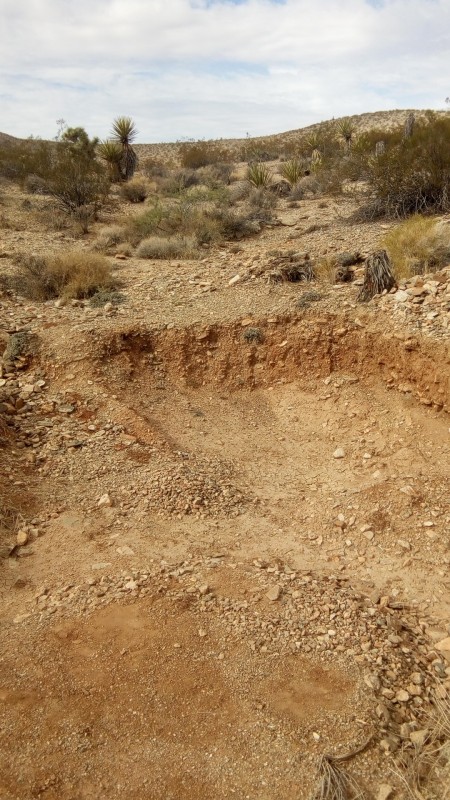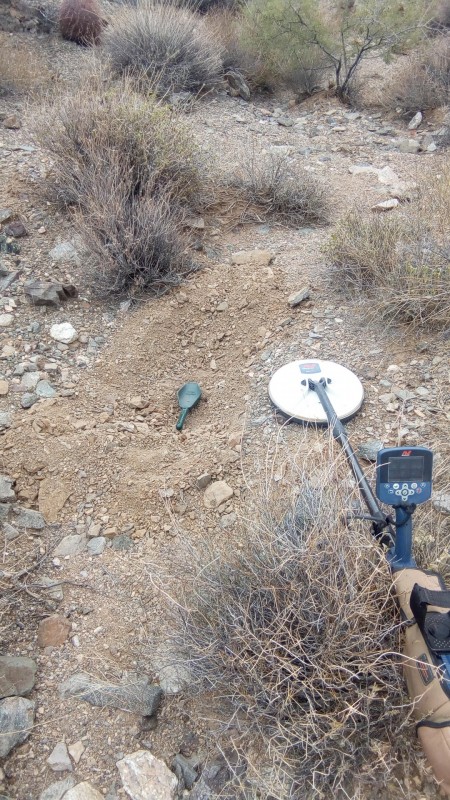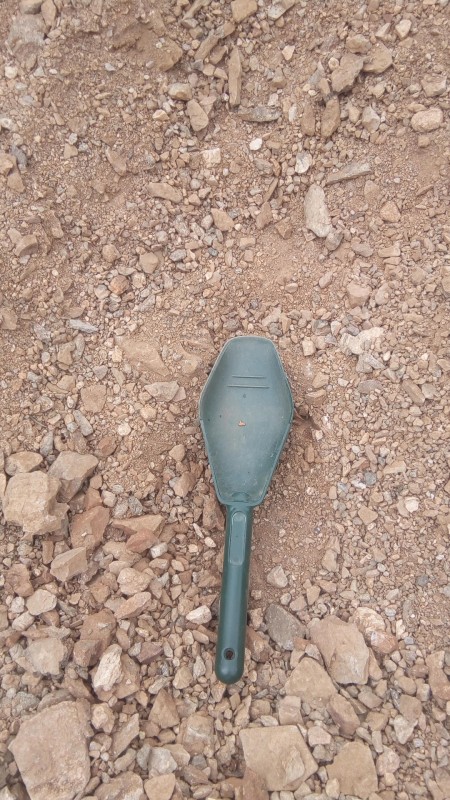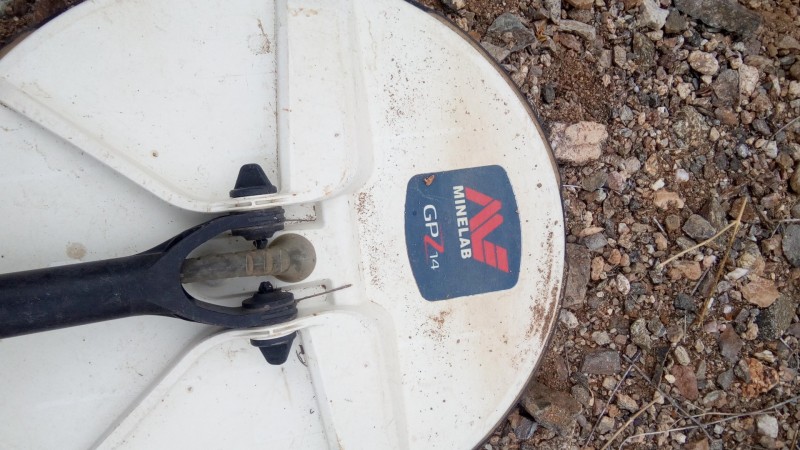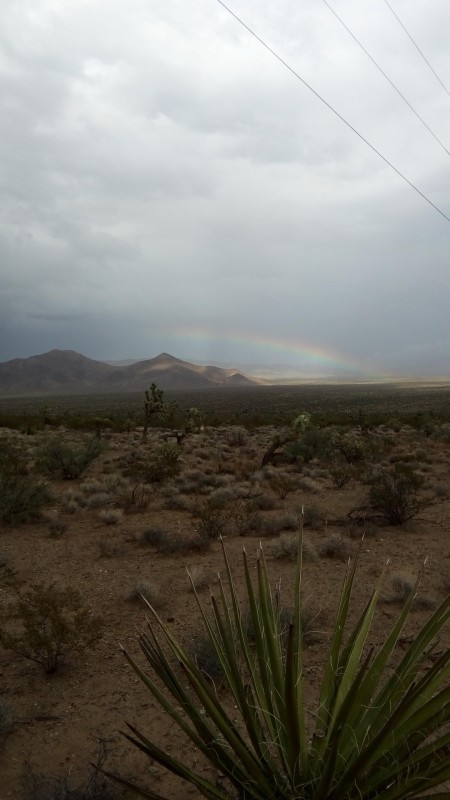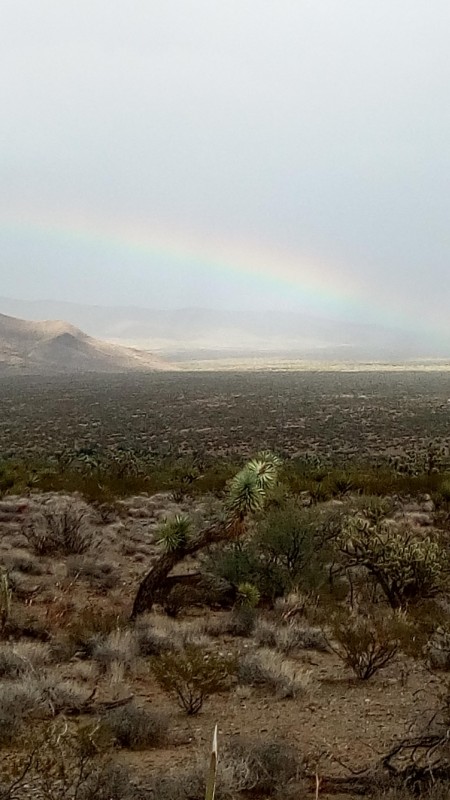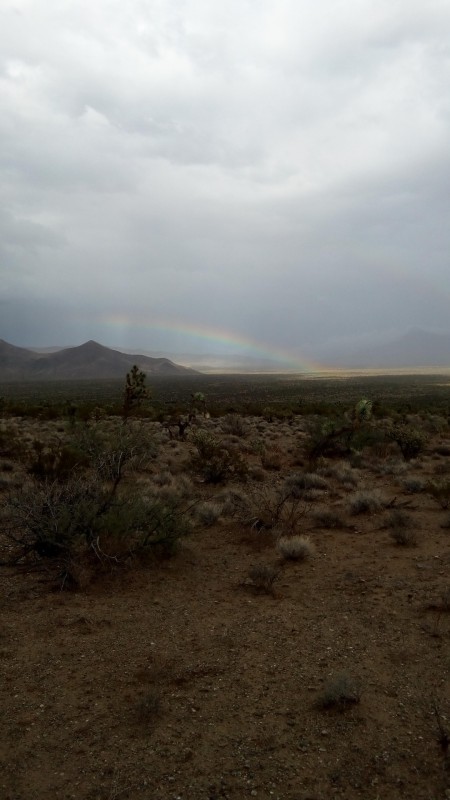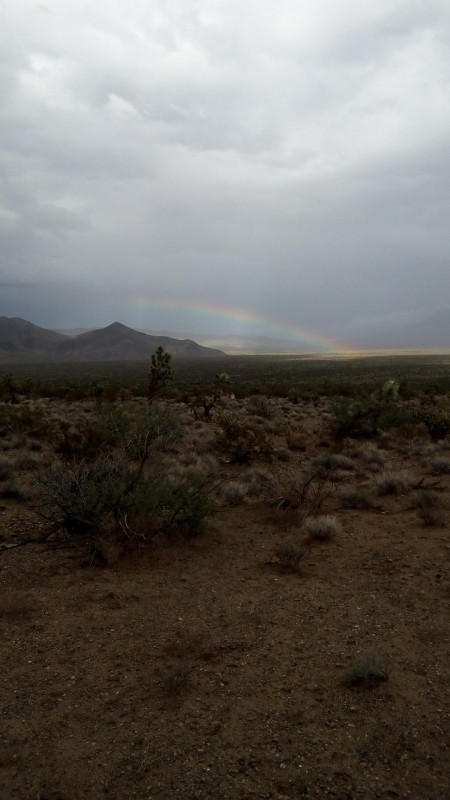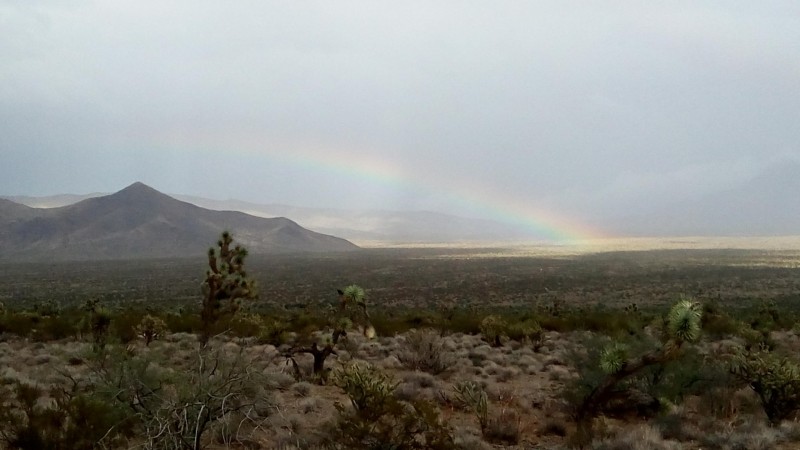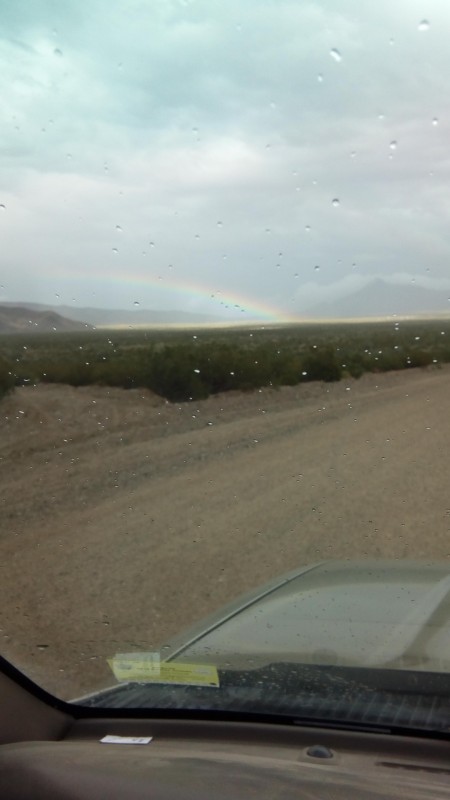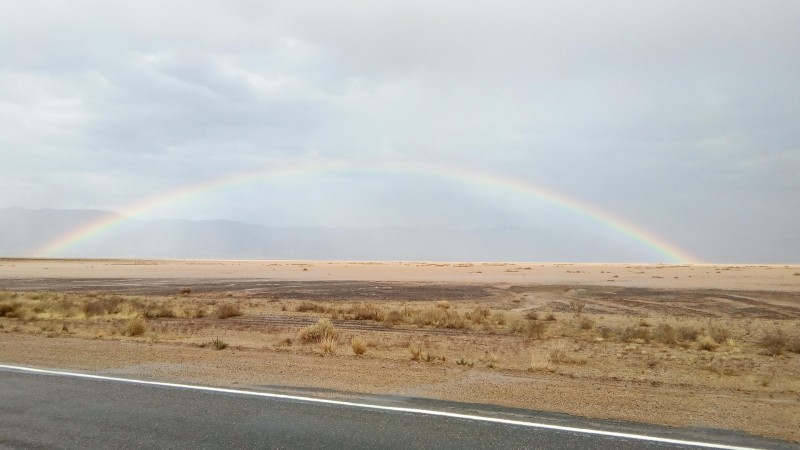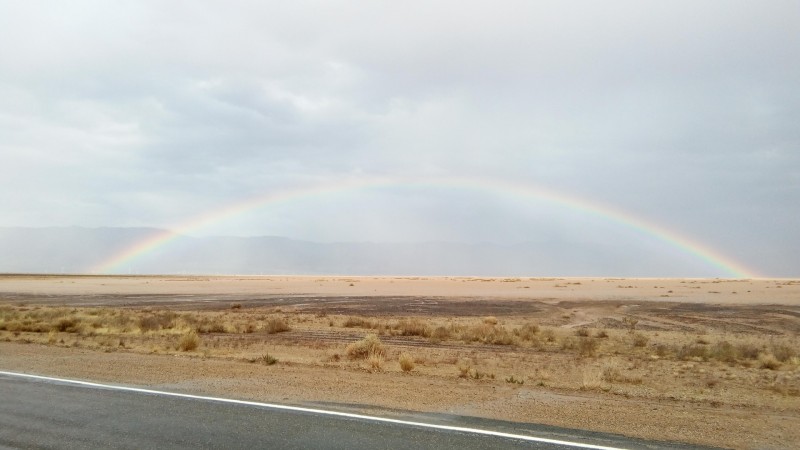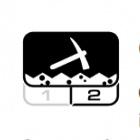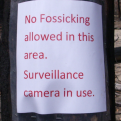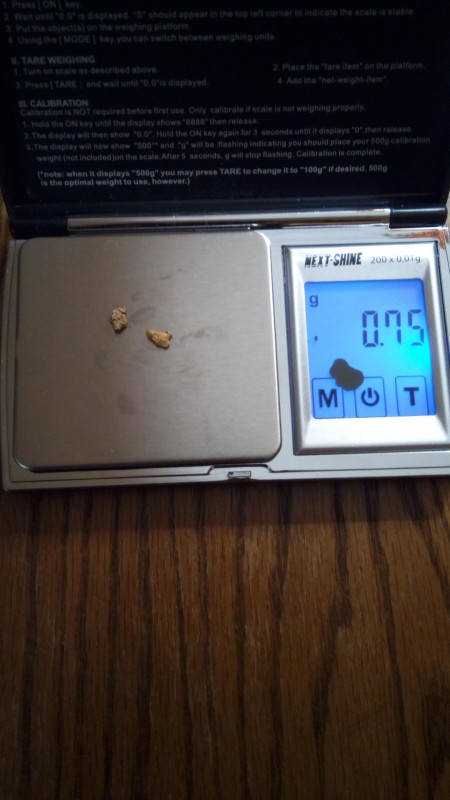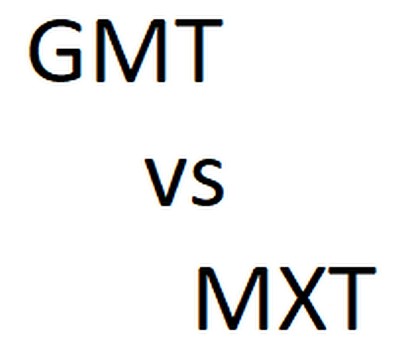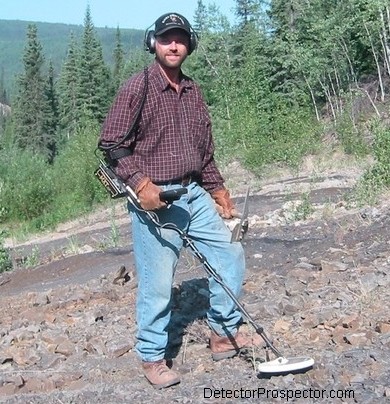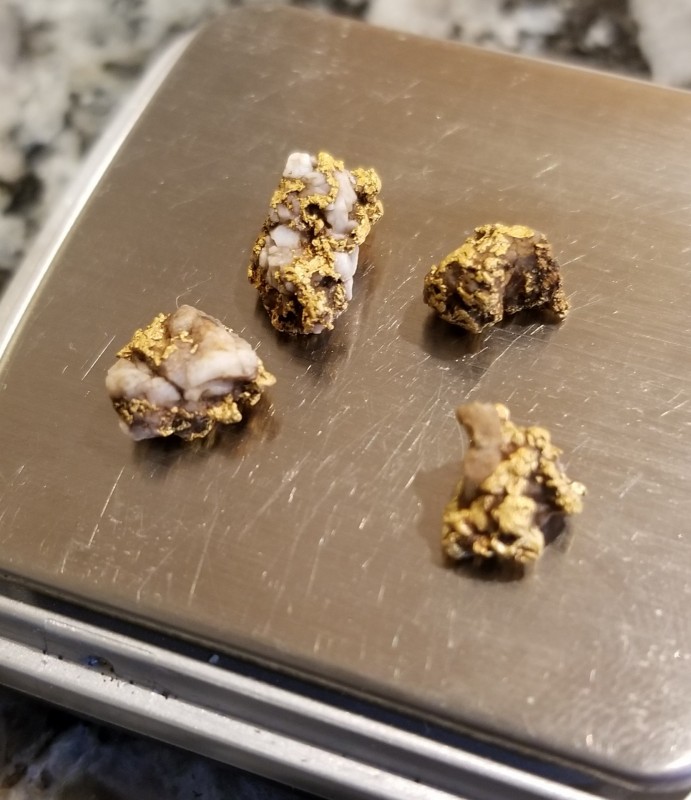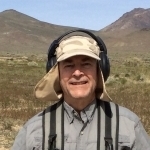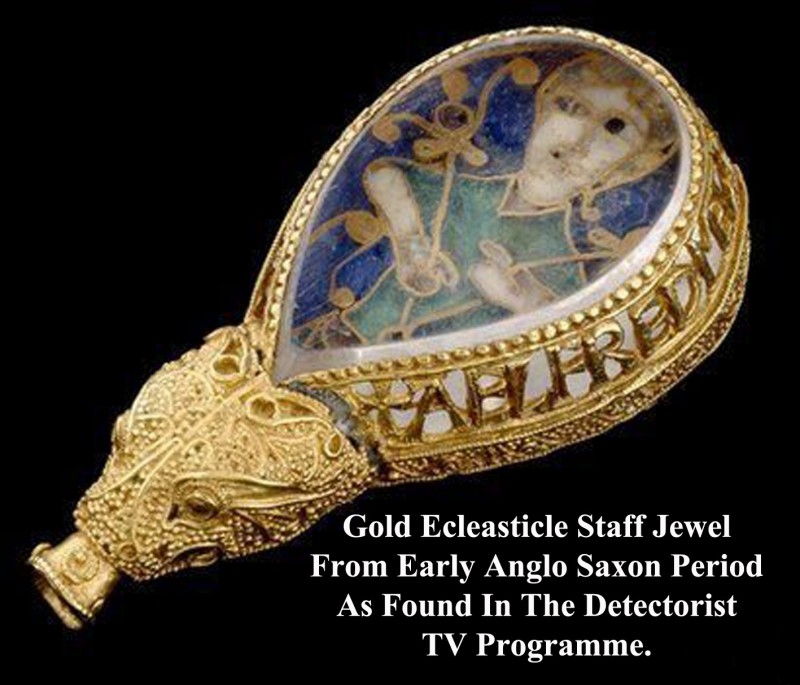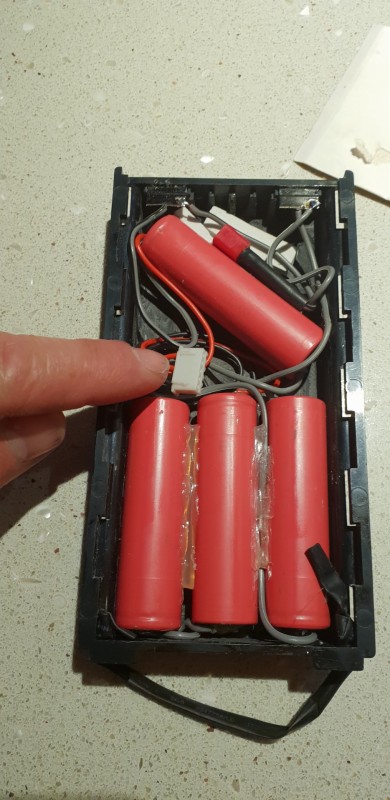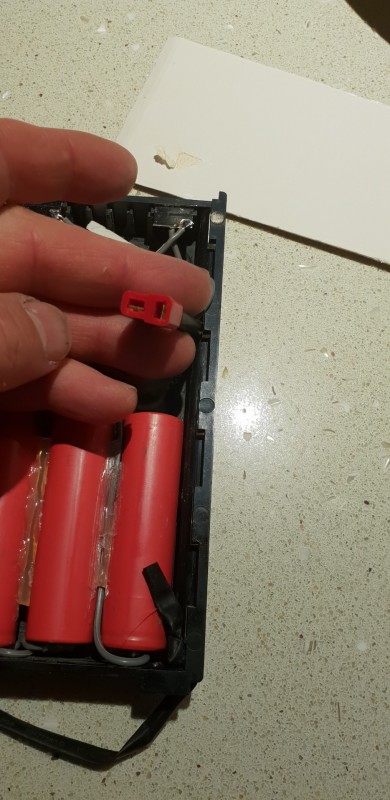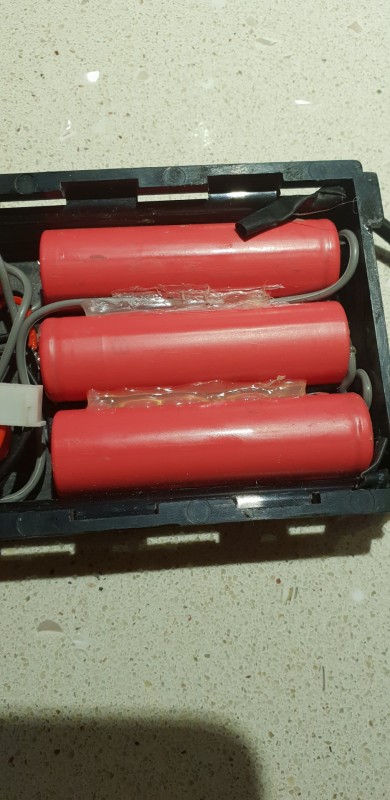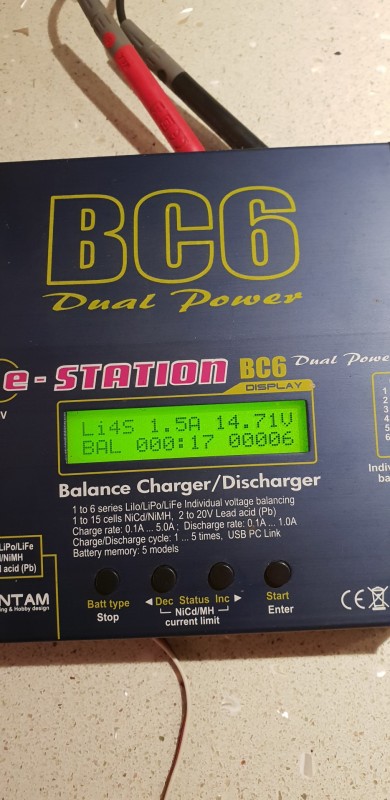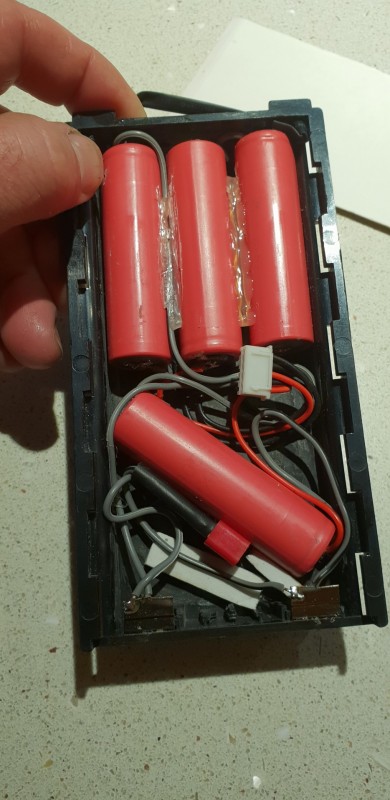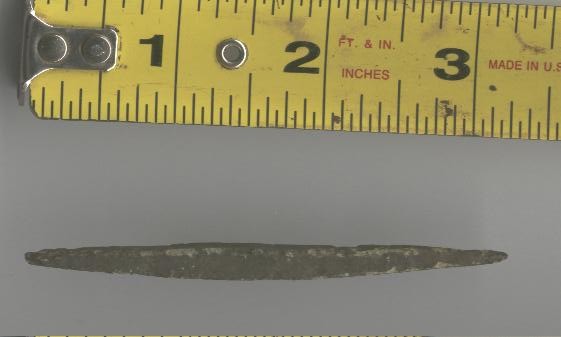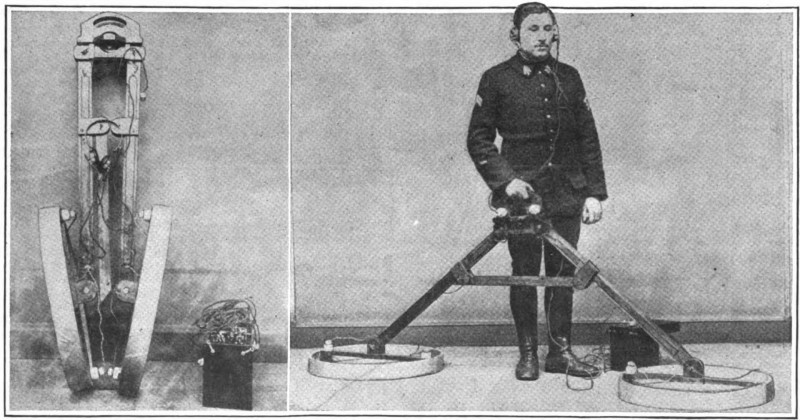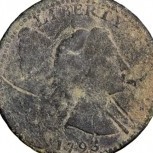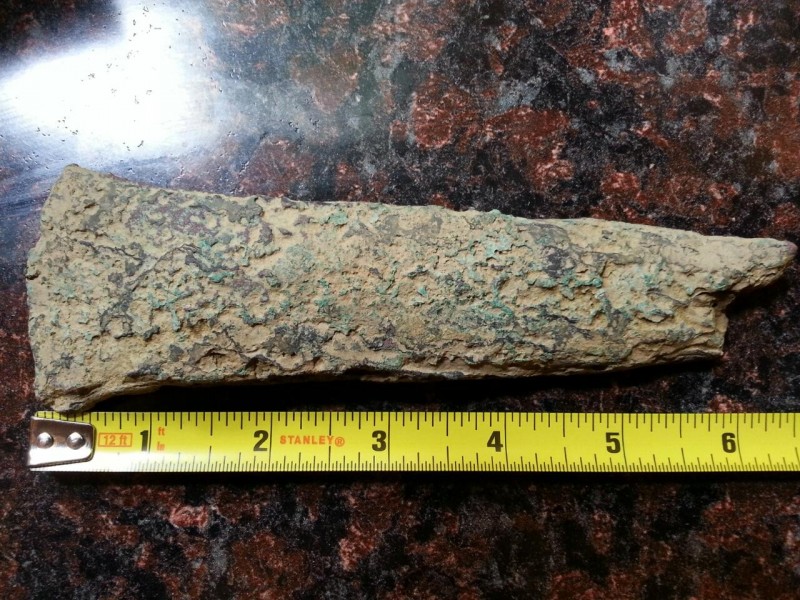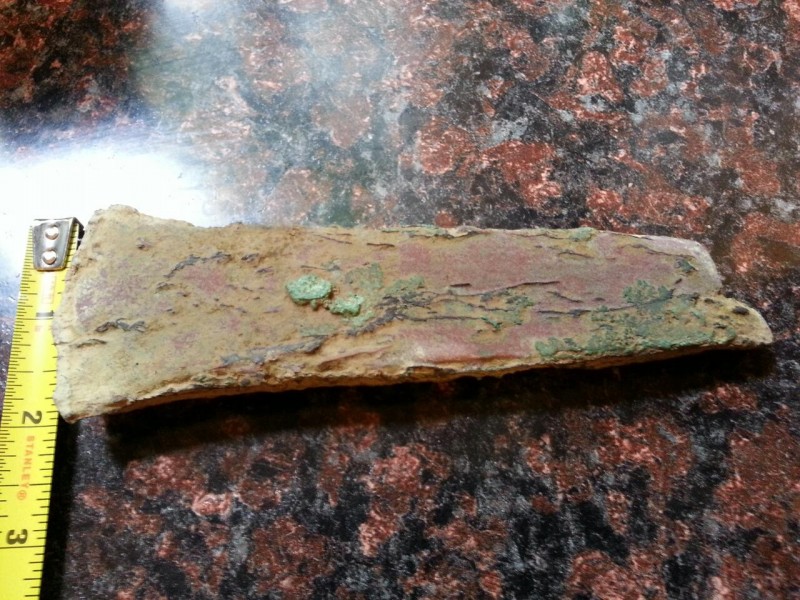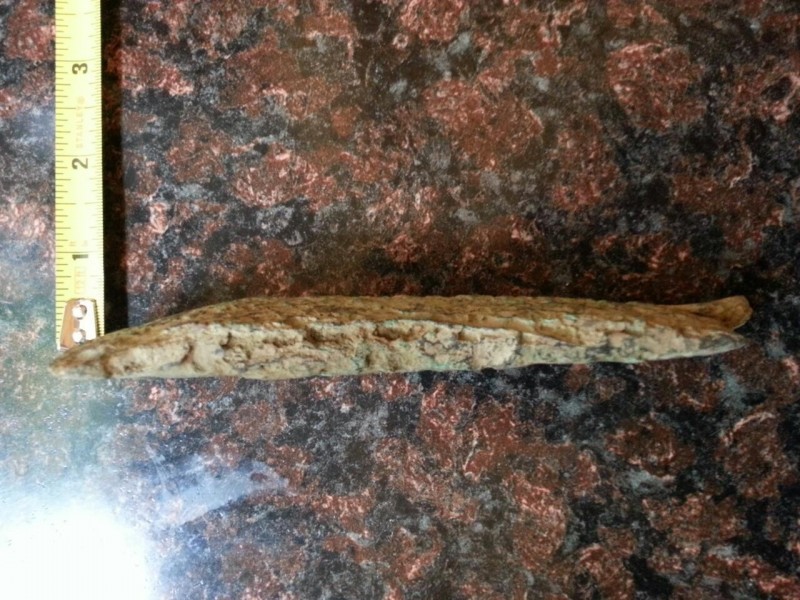Leaderboard
Popular Content
Showing content with the highest reputation on 10/13/2018 in all areas
-
As I mentioned in the below thread, I received my 6 inch coil yesterday and couldn't wait to take it through the paces: Today, during a lunch break from work, I headed out to a local old and pounded park I have hunted countless hours with countless machines. I have been amazed the life my Equinox brought back into this park. My early year success is outlined here: So, with an hour to hunt, my E600 in hand, loaded with the 6 inch coil and original firmware (I am still testing old vs. new firmware using my E600 with original and E800 with new firmware), I set out. I was running Park 1, 50 tone, Sensitivity 22 (pretty stable), Recovery 3 (6 on 800) and IB 1 (2 on 800) and walked into the area of the park I have hunted hardest to see if this rig could uncover anything I missed with all my other machines, including the E600 and E800 using stock coils. My first target was a series of bouncy tones across about 4" of ground. As I narrowed my swings, concentrating on the different tones, I was able to hear one solid mid tone that was 11-12 ID, but a couple of high tones that were more scratchy and not repeatable an inch or two away in two directions. I pinpointed and it was evident that I had 2, maybe 3 targets there. I chose to circle the mid-tone first. While the depth meter on the 600 with old firmware isn't exact, the modulation on the pinpoint told me it was in the 4"-5" range. So I dug. I was expecting a pull tab, or beaver tail. Both notorious for bouncing into the 12-13 range in my ground, but also occasionally giving off 11's and 14's. My intent was to clear the trash, so I could better hone in on the higher tones sitting near this target. A little over 4" down: I think it is a 1935... our ground is hard on nickels. Only my 3rd Buffalo since I started detecting and my previous two were no-dates. I refilled my hole, stood up and swept the coil over the area again... the high tones were still there, and equally as iffy as before, giving me numbers in the 21 to 26 range, and on every other pass or so. But they pinpointed pretty tight.. I estimated 5"-6" based on the pinpoint tone on both. A little ground excavating later and out popped: Looks like a 40's and a 50's wheatie. I have a little cleaning to do on all three of these coins, and they aren't ground breaking by numismatic standards, but I am thrilled. And here is why: Three old coins that by all rights, should have been found previously, but weren't. I have a suspicion that the closeness of these coins would have given larger coils, even with fast recovery like the Equinox, troubles. So the 6 inch coil came through in my opinion (I would bet that I was getting some type of blended tone previously... like a 15 or 16 on the Equinox as an example, which I chose not to dig thinking it was trash). In my soil, with the settings I was using, I think I was at the limit of detecting depth with these Wheaties... about 6". So that is really good information for me. Not that depth is everything, because I was able to separate between these three targets at depth. Had I been thinking more scientifically, I would have tried to clean up the tones by dropping the recovery down to 2 (4 on the 800), or boosting the sensitivity up to 24 or 25. Or I would have walked back to my car and grabbed the 800 with the stock 11" and documented what these targets read, and why I hadn't investigated them before. Heat of the hunt and a lesche in my hand got the better of me. All three of these targets were dead center in my plug. Which is somewhat expected when the coil itself is only 6", but just verification that the coil with this rig was pinpointing accurately. Hopefully more results and finds to follow. HEH (Happy Equinox Hunting) to all, ~Tim.4 points
-
Pretty sure that some of the trick gear we had access to would out depth a GPZ, but even if the GPZ were better the gear we used would have easily reached the bottom for anything of size. As James has stated, there would only be small stuff left, and it can stay there for all I care.4 points
-
Last Thursday night it was time for a Gold Basin trip. I knew I had a couple of days so off I went. The trip for me consists of leaving sometime in the middle of the night, driving 375 miles (6+hrs) and then beginning the hunt. I've done this many times since I first started going there in 2011. It is not an area where I've found a lot of gold but I've found some. Meteorites are also around but I didn't seek them this trip. When you go into gold basin there is always this sign. It is not the old Gold Basin road that is about 5 miles away but it makes for a good picture! These first couple of pictures were taken about 8 AM so I did pretty good with a couple of stops since I left at 1 AM. The hunt was on. I wanted to find something with the 6 inch Nox so I hunted with it for the morning and the afternoon. I'll save my details about that for another thread but I did manage to get a little .32g nugget with the Zed before the day was over. No skunk at least. My camping spot was near where I found the nugget. I slept in the 4Runner with all of the things outside. It was a great night without wind. This was the dawn the next morning looking out my bedroom window. After a bit more searching in this area it was time to explore and I ended up in a gully. You can get an idea of a partially dry washed and detected gully from these pictures. I didn't get any gold out of this stop but I did later. I called a friend and told him where I had been and what I had done and he suggested a place to go. It was very similar to the pictures (it all looks the same) but this time I was using the 7000! I heard a little mellow signal and dug down about 5 inches to bedrock and thought ... oh, no ... hot rock again but then the target moved and the bedrock stayed! In the scoop screaming ... a nice little .42g nugget! Two days, two nuggets for .75g total. This is better than I normally do in Gold Basin. The weather started closing in so it was time to go. It is better to stay longer there now because of the long drive but I was not going to stay in the rain. On the way out I had some visual treats. Mitchel3 points
-
That happened to me as well Steve. I bought a second hand Dual Surf PI and since it hadn’t been registered for warranty, Whites gave me a full warranty. Great company.3 points
-
Andy I’m going to be gone from the middle of next week and be gone for little over a week. If you will PM your address why don’t you let me surprise you. I’ll talk with you before I leave. Chuck2 points
-
2 points
-
sorry I didn't see the date. Like Randy I have found George 3rd counterfeits too but never Viccy ones. It looks as if yours could have been made from the impression from the original as Like Randy's example mine are clear as a bell where as yours looks worn. Nice find though and collectable2 points
-
I've never been back, but judging by other areas done with proto's and big loops, only deep small gold would remain.2 points
-
Minelab must finally be opening the spigot. Mine arrived yesterday and I got in 3 hours today (with success -- more details on Sunday when I have time to post them). I gotta say that this is the first detector I've owned where I've used an 11 inch coil (compared to 6 inchers) a majority of the time, because I had no choice. It was a great learning experience. Do I wish to repeat that with my next detector? No.2 points
-
Sent my MX Sport in for repair, rear plastic housing cracked. I had taped it together to use it in the Rye Patch nugget shoot,(worked fine, and I found a token:)) Whites sent me a new one, even came with new headphones! That's one of the reasons I have two Whites machines. Thank you again Whites.2 points
-
Zimbabwe; just the name brings visions to my eyes... Some one alluded to this fact but I will just say it; you can't find it if it isn't there. And; no on ever gets it all. As to your settings, I would start slightly over medium sensitivity and follow Mcclendon's set-up. I would dig every positive signal until I knew what the detector is saying...even questionable signals! Finally, practice, practice, practice and read and reread the directions...carry them with you. fred2 points
-
$239 internet price and supplies are now shipping to dealers. Time to order if you have not already. It’s so light it may replace the 11” as my stock coil. I don’t have any more problem pinpointing with it than the stock coil. Unreserved thumbs up on my part!2 points
-
I had a friend who bought a second hand out of warranty White’s Surf PI. He sent it in to get checked out and was surprised when White’s sent a new one back. Even though it was second hand and out of warranty, there had been a redesign of the oring seal, and White’s wanted him running the newest version. Very impressive to do that sort of thing when the customer is not demanding or even asking for it. Great service White’s!!2 points
-
Yes JW some of the forgeries are worth more than the real thing but all depends on the coin condition as the copper content tends to rot away much quicker than silver or gold. Henry 8th debased his coinage so as to gain the silver and finance his armies, Henry VIII silver coins would wear away on the coin legend high spots such as Henry's nose and as a result his nose would show through red from the copper and resulted in Henry being nick named "Old Copper Nose". Here below is a small article from my dear friend John Winter blog. ========================================================================== Henry VIII – Old Coppernose By John Winter Until Henry’s reign, English currency was made of valuable metals – gold and silver – whose face value was approximately the same as their bullion value. To pay for his wars (see below), Henry decided to mix the silver in his coins with the base metal copper. The Henry VIII groat (4d) was minted in Bristol in 1547 was such a coin with only a small silver component. The blanched silver surface (showing through first on the high surfaces – e.g. the nose of the portrait ) soon wore away to reveal the copper alloy underneath earning Henry the nickname of Old Coppernose! The currency had been debased.2 points
-
2 points
-
I'm surprised that no one said it: There is GOLD at the bottom of those rainbows!2 points
-
This is the Ultimate Minelab Equinox 600/800 VDI Numbers and Tones video covering Rings and other Jewelry. I cover Platinum, Gold, Silver, Tungsten, Stainless Steel, and Aluminum Rings. Pendants, Earrings, and even go over various different style Pull Tabs. A lot of time was put into this labor of love Test/Demonstration video and hope it helps out new Equinox users. Make sure to also check out my video covering Coins. GL & HH1 point
-
The two best-selling professional metal detectors in Alaska over the last twenty years are probably the White’s Electronics GMT and White’s Electronics MXT. This is because a set of local circumstances favored these two detectors. These two machines are based on the same circuitry, but have very different design goals and therefore features which determine which might be the best choice. Since the sole purpose of the GMT is prospecting, it operates at a high 48 kHz for extreme sensitivity to small metal items... hopefully gold nuggets. It is not a "gold-only" machine in that it picks up all metals. The "gold-only" detector has yet to be invented. It does however have a very efficient system for separating ferrous (iron or steel) items from non-ferrous items (gold, copper, silver, lead, aluminum, etc.) In theory the GMT could be used for other types of detecting, but it has a couple serious problems. First is the fact that it is so sensitive to small metal! Any attempt to use it for typical coin detecting would leave a detectorist quickly frustrated. Imagine a foil gum wrapper sucked into a lawn mower, shredded, and spread about. Parks and other areas popular with coin hunters are full of tiny aluminum trash. Every one of these items will sing out loudly on the GMT. Coin detectors are purposely designed not to pick up these tiny non-ferrous items as 99% of the time they are trash. The GMT also is very sensitive to wet salt sand, and so is useless for most beach detecting. It would not be impossible to use the GMT for other detecting tasks, but in general it really should not be considered for anything other than nugget detecting. The MXT was built using the GMT circuitry. An advanced LCD readout discrimination system similar to that on top-of-the-line coin detectors was added. The frequency was lowered to 14.7 kHz to increase the sensitivity to coin type targets and to moderate the problem of being too sensitive to tiny trash. But the frequency is still well above that of standard coin detectors which work around 6 kHz so the MXT retains much of the GMT ability to hit gold targets. The MXT has three distinct modes: Coin & Jewelry, Relic, and Prospecting. Each mode dramatically changes both the sounds and the LCD readouts generated by different targets. The Coin & Jewelry mode is very much like any standard coin detector, but with a better than normal sensitivity to gold coins and gold jewelry. The Relic mode is a rather unique dual tone mode that operates in both all-metal and discriminate modes at the same time. That alone is subject for another article! The Prospecting mode in effect turns the detector into a GMT, but one that runs at a lower frequency and that lacks a manual ground balance. And the MXT has a special Salt setting to allow it to work on those beaches. White's GMT versus White's MXT The GMT is admittedly superior when it comes to picking up small gold. It can hit specks weighing less than 1/10th of a grain (480 grains per Troy ounce) while the MXT will need nuggets weighing 2-3 grains to get a decent signal. But on the flip side, the MXT may very well be the superior unit for large nugget detecting. The lower frequency actually is smoother in mineralized ground, and in particular does not produce as many weak variations in the threshold in mixed cobbles as the GMT. The drawback of higher frequencies is that while small gold produces a sharper response, so do hot rocks. The manual ground balance on the GMT is very helpful for hitting those tiniest specks, but less useful for larger gold. If larger gold nuggets are the goal, then the MXT is every bit equal, if not better than the GMT in overall performance due to the smoother ground handling capability. It’s not that the MXT goes deeper, it just has less issues with hot rocks while still being able to hit those larger nuggets. In milder ground the GMT reigns supreme. For Alaska those wanting to go places like Crow Creek or Mills Creek and have a chance of getting gold, any gold at all, will be best served by the GMT, especially if paired with the little 4” x 6” Shooter coil. It will get the gold in these heavily hunted areas, and will hit gold the MXT will miss. But if versatility is important, or chasing large gold nuggets in tailing piles at Ganes Creek is the goal, the MXT is the way to go in my opinion. It is simply one of the best all-around detectors I have ever used. The White’s MXT Engineering Guide is full of interesting information on the development of the GMT and MXT and provides a rare look at what goes on behind the scenes at a metal detector company. ~ Steve Herschbach Copyright © 2010 Herschbach Enterprises1 point
-
Here is a question I received via email, with personal references removed. I prefer to answer these on the forum so everyone gets the benefit of the answer plus others can offer their opinions also. "I am new to metal detecting and, your site here has really helped me out. I have a couple questions that maybe you can help me out with. What are some of the geologic indicators that you look for to determining where to prospect for nuggets? I try to study some of the geology maps but I could use some further pinpointing. I have also been looking at the National map of Surficial Mineralogy. Using the aster and minsat7 maps what are some of the indicators that may point you to higher gold bearing ground? Any help would be deeply appreciated. Could you point me to some old places where you have found gold? I'm not asking to be shown active patches. Just areas that you feel are worked out. I just want to see what gold bearing ground looks like. This would help me to start to learn the commonalities and characteristics of gold bearing grounds. Still looking for that first nugget! Thanks again for any info you can provide." My method is much simpler than that. I basically look for gold where gold has been found before. Think of it like fishing. If you want to go catch salmon you have two options. You can go to where people have caught salmon before - pretty good odds here. Or you can go where nobody has ever caught a salmon before. Very poor odds! So call it prospecting using history to determine where gold has been found before, and then getting as close as I can to those places. History and proximity. Finally, I may then employ geology to narrow that search in a given area if it turns out the gold is confined to certain rock types. The first place I normally turn as a rough guide to any new location in the U.S. is: Principal Gold Producing Districts Of The United States USGS Professional Paper 610 by A. H. Koschmann and M. H. Bergendahl - A description of the geology, mining history, and production of the major gold-mining districts in 21 states. This 1968 publication obviously lacks the latest production figures but it still is a great overview to where an individual prospector can look for gold in the United States. It is a 283 page pdf download so be patient. Pay particular attention to the listed references in the extensive bibliography for doing further research. You can download this here and find many more useful free books on this website at the Metal Detecting & Prospecting Library Principal Gold Producing Districts of the United States So just for fun let's say I want to go look for gold in New Mexico. The section on New Mexico starts on page 200 and here is a quick summary of the opening paragraphs: "The gold-producing districts of New Mexico are distributed in a northeastward-trending mineral belt of variable width that extends diagonally across the State, from Hidalgo County in the southwest corner to Colfax County along the north-central border. From 1848 through 1965 New Mexico is credited with a gold production of about 2,267,000 ounces; however, several million dollars worth of placer gold was mined prior to 1848. Mining in New Mexico began long before discoveries were made in any of the other Western States (Lindgren and others, 1910, p. 17-19; Jones, 1904, p. 8-20). The copper deposits at Santa Rita were known and mined late in the 18th century, and placer gold mining began as early as 1828 in the Ortiz Mountains south of Santa Fe. In 1839 placer deposits were discovered farther south along the foot of the San Pedro Mountains. The earliest lode mining, except the work at Santa Rita, dates back to 1833 when a gold-quartz vein was worked in the Ortiz Mountains. In 1865 placers and, soon afterward, quartz lodes were found in the White Mountains in Lincoln County; in 1866 placer deposits were discovered at Elizabethtown in Colfax County, and silver-lead deposits were discovered in the Magdalena Range in Socorro County. In 1877 placers and gold-quartz veins were found at Hillsboro, and in 1878 phenomenally rich silver ore was found at Lake Valley in Sierra County. The mineral belt of New Mexico is in mountainous terrain that lies between the Colorado Plateau on the northwest and the Great Plains on the east. It is a zone of crustal disturbance in which the rocks were folded and faulted and intruded by stocks, dikes, and laccoliths of monzonitic rocks. Deposits of copper, lead, zinc, gold, and silver occur locally throughout this belt. Some deposits of copper and gold are Precambrian in age, but most of the ore deposits are associated with Upper Cretaceous or Tertiary intrusive rocks. The gold placers were probably derived from the weathering of these deposits. In later Tertiary time lavas spread out over wide areas of the State, and fissures within these rocks were later mineralized. These fissure veins are rich in gold and silver, but in most places they are relatively poor in base metals. In New Mexico, 17 districts in 13 counties yielded more than 10,000 ounces of gold each through 1957 (fig.19). Figure 19 is a handy map showing us where you want to look in New Mexico and also where looking is probably a waste of time. Click for larger version. Gold mining districts of New Mexico The map shows what the text said "The mineral belt of New Mexico is in mountainous terrain that lies between the Colorado Plateau on the northwest and the Great Plains on the east." Sticking to this area is going to be your best bet. Based just on this map I see two areas of general interest - the central northern area, and the southwestern corner of the state. The text mentions that placer deposits were discovered at Elizabethtown in Colfax County, and the map shows that as the Elizabethtown-Baldy mining district. Following along in the text we find this: "The placer deposits along Grouse and Humbug Gulches, tributaries of Moreno Creek, each yielded more than $1 million in placer gold and silver. Another $2 million worth of placer gold and silver was recovered from the valleys of Moreno and Willow Creeks (Anderson, 1957, p. 38-39), and some gold also came from the gravels along Ute Creek. Graton (in Lindgren and others, 1910, p. 93) estimated the placer production of the Elizabethtown-Baldy district prior to 1904 at $2.5 million, and C. W. Henderson (in U. S. Bureau of Mines, 1929, pt. 1, p. 7 40) estimated the production through 1929 at about $3 million (145,138 ounces). The total placer production through 1959 was about 146,980 ounces." The reference material from the passage above is in the back of the book and is where we can get real details. Google is our friend. This stuff used to take me lots of visits to libraries! Anderson, E. C., 1957, The metal resources of New Mexico and their economic features through 1954: New Mexico Bur. Mines and Mineral Resources Bull. 39, 183 p. Lindgren, Waldemar, Graton, L. C., and Gordon, C. H., 1910, The ore deposits of New Mexico: U.S. Geol. Survey Prof. Paper 68, 361 p. Henderson, C. W., 1932, Gold, silver, copper, lead, and zinc in New Mexico: U.S. Bur. Mines, Mineral Resources U.S., 1929, pt. 1, p. 729-759. That is more than enough, but let's also Google placer gold new mexico Lots of great links there, but two jump out: Placer Gold Deposits of New Mexico 1972 USGS Bulletin 1348 by Maureen G. Johnson Placer Gold Deposits in New Mexico by Virginia T. McLemore, New Mexico Bureau of Mines and Mineral Resources May 1994 Notice the source of the last one. Most states with much mining have a state agency involved that can be a good source of information and in this case it is the New Mexico Bureau of Mines and Mineral Resources. That last one is a real gem and contains this passage: "All known placer deposits in New Mexico occur in late Tertiary to Recent rocks and occur as alluvial-fan deposits, bench or terrace gravel deposits, river bars, stream deposits (alluvial deposits), or as residual placers formed directly on top of lode deposits typically derived from Proterozoic, Cretaceous, and Tertiary source rocks (eluvial deposits). During fluvial events, large volumes of sediment containing free gold and other particles are transported and deposited in relatively poorly sorted alluvial and stream deposits. The gold is concentrated by gravity in incised stream valleys and alluvial fans in deeply weathered highlands. Most placer gold deposits in New Mexico are found in streams or arroyos that drain gold-bearing lode deposits, typically as quartz veins. The lode deposits range in age from Proterozoic to Laramide to mid-Tertiary (Oligocene-Miocene) (Table 2). There are some alluvial deposits distal from any obvious source terrains (Table 2). Eluvial deposits are common in many districts; some of the larger deposits are in the Jicarilla district." So now we have a lifetime of ideas on where to go and a basic idea of the geology. And an even better map! Click for larger version. Placer gold deposits of New Mexico Let's look for specific site information. 1. Go to http://westernmininghistory.com/mines 2. Click on New Mexico Mines 3. Click on Colfax County Mines 4. Click on Elizabethtown - Baldy District Here you will find basic site information, references, and a zoomable map with alternate satellite view. An alternate site... 1. Go to https://thediggings.com/usa 2. Click on Browse All States 3. Click on New Mexico 4. Click on Browse All Counties 5. Click on Colfax At this point note you can browse mining claim information or deposit information. Researching mining claims, land ownership, etc. is another topic but here is one source of mining claim location information. For now.... 6. Click on Browse All Deposits or Use The Interactive Map 7. Click on Elizabeth - Baldy A little more detail than the previous site, including this note "SOME FAIRLY COARSE NUGGETS IN WILLOW, UTE, SOUTH PONIL CREEKS, GROUSE AND HAMBURG GULCHES, MORENO RIVER" One more... 1. Go to https://www.mindat.org/loc-3366.html 2. Way down at bottom click on New Mexico 3. Way down at bottom click on Colfax County From here you can dig into all kinds of specific site information but the navigation is a real mess. Have fun! Historic claim staking activity can be a clue. You can get the Big Picture by looking at Mine Claim Activity on Federal Lands for the period 1976 through 2010 OK, that really should have answered your question. As far as places I have been, they are nearly all in Alaska and can be found here Now, I did all the above from scratch with no real prior information on New Mexico in about 2 hours. You can do the same for any state. However, finding where the gold is really is the easy part. The hardest part by far is finding out who controls the land and getting proper permission for access. In Alaska everything is covered by thick ground cover, so opportunities for metal detecting are strictly at creek level, and nearly always claimed. The process there is simple - find out who owns the claims and get permission for access. In most of the western U.S. there is far less or no ground cover, and so getting in the vicinity of and searching around or near mining claims without being on them is a far more viable option than in Alaska. Or you can try and get permission to access the properties. You still need to be able to track down property locations and owners however. For private property I subscribe to and use OnXMaps for my PC, Google Earth, iPad, and iPhone. It quickly maps private property and gives you access to tax roll information about the owners. Tracking down mining claims is easy in the big picture and harder in the details. The Diggings referenced before has interactive claims maps. I subscribe to Minecache for their Google Earth overlay. However, the most comprehensive source with the deepest repository of Land Ownership information is Land Matters. They have online claim mapping with direct links to claims owner information. Note that all online sources have a lag time between the actual staking of a claim on the ground and when it reaches the online systems, if ever. I say if ever because some claims exist solely at the county or state levels and there is no good way to find them short of visiting local recorder's offices or eyeballs on the ground. Prior thread on finding claims information. Finally, I am not the last word on this subject by any means. This is just how I go about it - I hope it helps somebody else. This article was promoted from a thread on the forums. Additional details may be found there via follow up questions and posts. ~ Steve Herschbach Copyright © 2017 Herschbach Enterprises1 point
-
Hello all, new warm body here in Albany, GA with hurricane Michael in the background. I started with White's XLT and now have XP Deus with ws5 headphones and standard coil.1 point
-
Hi all. I made it out Sunday for a nice hunt. Great weather temp wise, maybe a little windy. I want back to the wash I found the nuggets in a couple of weeks back, and was able to squeak out 1 more. I tried to expand the area but not luck. I picked up and headed to an area that has been mined a lot, full of trash, but I figure must be full of gold. Wow I really am amazed what the GPZ is capable of. 2 of the nuggets I found really amazed me, size and depth. 1 of those I was detecting a drywash header pile and got a small repeatable signal. I kept raking back the rocks, still getting the signal till I got to virgin ground under the pile, 6 more inches down I pulled out a sub gram nugget. Amazing. All 4 for the day added up to 3.8 grams. Now to the question, I've been soaking that big quartz specimen I found in Wink for about a month now, it is exposing more gold, very slowly. How long do I soak? Do I need to refresh the wink? The longer I soak it the more quartz will dissolve? Thanks Chris1 point
-
1 point
-
Andy Tell me what you want and I’ll see what I can do for you. Chuck1 point
-
Mitchel, thank you for sharing your adventure and pictures. I have not had much luck in GB but I like the area. At night the stars can be amazing.1 point
-
1 point
-
Andy You must go on youtube and watch the 3 separate series of "The Detectorists" the programmes portray the metal detecting on the humorous side here in the UK at first it seems a bit on the "Train Spotting" type of show but it grows on you . I have attached a photograph of the gold Ecleasticle Staff Jewel which the lads had found and is identical to an original find now on display in the Ashmolean Museum. Here below is a link to the full story about the Alfred Jewel found in Somerset 1693. https://en.wikipedia.org/wiki/Alfred_Jewel .1 point
-
Hi all. I thought I would post this here. Had a few hours off work today and thought more about this 16.8v project. ---- (Having experienced the CTX3030 LIION battery bay leaking (on that machine I only use the AA NIMH 1.2v tray when detecting in fairly deep water). NIMH has less current in the event of a salt water leak). I have not had this machine submerged yet, so unsure if to trust the housing! -----; I wanted to be able to use the stock NIMH pack in the TDI BH and also the LI ION 16.8v pack for the beach when extra depth is needed! In the end I decided to undo the previous method with the screws on the battery terminal. I wanted a "stock" 16.8v battery tray! Given the NIMH tray is only about 13USD on Amazon I decided to sacrifice the NIMH tray that came with the detector! A) remove lid B) remove all metal connectors C) Dremel the chassis empty. You need to take away some of the thickness of the bottom of the tray, otherwise you won't be able to get the LI ION cells into the detector. You will need a thinner lid also! Be careful not to damage the exterior of the tray. D) as this was a trial, I used some old 18650 cells, a 4s balance lead, and a deans plug. (Final version will have. Built in balance board, and charge connector so the lid won't need to be opened for charging) D1). Three cells side by side. One on a 45 degree angle. Fits fine! E) wired in series for 16.8v. hot glued into original battery chassis. The result - a LI ION pack that I can "change out"with the standard pack! Trial completed. The next one will be more tidy!! ****After 3 hours of detecting, still above 14v****1 point
-
Thanks JR. Certainly sounds like an interesting place. This is the exact sort of spot I wonder if you and Reg went back to with the GPZ?1 point
-
I was wondering too, I took it to mean raise the Tone Break high enough to skip the caps that flash 10 TID. (I think he meant 4 gram chain and not 0.4 gram chain)1 point
-
Liking the vids JR. The link worked fine. Out if interest, was that a previously worked gully back in the day and had been turned over before becoming farm land?1 point
-
Nice job Tim!! I really like the six inch but still use the stock a lot too. I think they compliment each other very well.1 point
-
1 point
-
1 point
-
Ive literally just emailed crawfords UK to check where i am on the list. Like with the equinox 800, i wonder how many units are going to each store? I got a feeling i'm waaaay down on that pesky list. Grhhh!!!1 point
-
Made my order directly 10:00am this morning at A.M.D. Brian said he has 2 coming in, all I can say is their is only one left !! LOL !!!!! Good Hunting1 point
-
This is now the 3rd time Randy has come good with expertise that just blow me away! Thank you. Well......Im actually over the moon i have a unique forgery. Its something different, and that to me means more than the real thing (which i have a few of anyways). Its getting too much this detecting game, I'm far too happy for my own good these days. Once my mortgage is paid off, ill be in heaven on earth ? Bloody brilliant, thanks all. Andy.1 point
-
I phoned my good friend Craig at Crawfords the UK distributor today and paid for my Equinox 15" X 12" coil and I was told that I should see my coil delivered early next week as they are being dispatched from the European central supply depot in Holland today. I am number one on Crawfords list, I placed my order 13 months ago when the Equinox was first launched at the UK 2017 Detectival, I ordered my Equinox 800 along with the 15" X 12" coil on that day1 point
-
Andy Your Victoria Shilling is a forgery and the base would be of poor copper then dipped in silver, the shillings and sixpences of George III were more susceptible to being forged than most other reigning sovereign and here below is a forged George II Shilling in the first stages of deterioration similar to yours. Over the years I have found many forged coins especially the Bullhead tanners (Sixpence) of George III he was called Bullhead because of his fat large head. Forged George III Shilling This is the best shilling example with most of the original silvering remaining. It's very convincing now and would have probably been undetectable without scratching the silvering of in 1819! In comparison with a real one it would seem this coin was either struck in inferior metal with the original (stolen) Royal mint dies or copied by a very very talented engraver. The artistic aspects of this coin are parallel with the original and there are no differences whatsoever with the quality and positioning of the design elements. Well done that forger!1 point
-
That is a truly amazing find.. and sorry for the very late reply to your post. The Archaeologist is correct in that most "copper culture" artifacts are found in Wisconsin due to being closer to the site in the Upper Peninsula where the surface copper deposits are located. The few found in my area are usually located in summer camps near river mouths, Indian garden sites and select areas along the Lake Michigan shore. I have permission to hunt an area near an old MSU dig site along Lake Michigan where I made my only copper culture find, a 3" awl.1 point
-
Thank you, Steve! What a great story. So glad you were willing to share it. Bugler1 point
-
Hunting gold is not for the faint of heart...nor for folks that cannot get up and down a 1000 times a day... dig it all fred1 point
-
Thanks for the great story Steve... you had me for a second there with that big copper nugget. Man that would have been a killer gold nugget. strick1 point
-
Thanks to Mark for this video. Just found it now. Top notch.1 point
-
1 point
-
Snake chaps always make me feel more comfortable, better safe than sorry. Never been struck but had a close call or two, at least our poisonous snakes can rattle, vs a nasty brown or mamba..lol1 point
-
jeees! don't wish for that! we don't need another chinese company making metal detectors to sell here! (h.h.!) j.t.1 point
-
No, New York... But, you may find this interesting..... yes, my host is very kind to share his sites with me. A while back near where I live I found a 3500 to 6000 year old copper adze that my state archaeologists believed may have originated in the Great Lakes Region since there are natural copper deposits in that area... Truly one of my best finds ever.. They are tough to discover here in New York... I will include the email he sent me back. He is the Curator of Archaeology at our state museum.. "Thanks for your email. Judging from your photographs, yes, this doesappear to be a copper adz (and a very handsome one at that) – this issuggested by the expanding shape in plan view, the asymmetric side viewprofile, and the concave surface on one face.Such copper adzes and gouges are relatively common in much of the GreatLakes, especially Wisconsin, where they date roughly to between 4000 and1500 BC (6000 and 3500 years ago). There, they are viewed as onediagnostic of the so-called "Old Copper Culture," a Native Americanlifeway that included the mining of copper that occurs naturally inparts of the Great Lakes, in the manufacture of these tools.In the New York region, these copper artifacts are less common but arediscovered occasionally. Parallel-sided gouges have been found inassociation with Brewerton notched points, dating to circa 3000-1500 BC. Copper adzes similar in form to yours have been found in the Champlainbasin – their age is uncertain but may be from roughly the sametimeframe. Because there are natural sources of copper in parts of theGreat Lakes, but not New York, archaeologists believe these artifactsprobably came into the region by some form of trade or exchange fromother Great Lakes groups. This interpretation is generally supported bychemical sourcing methods that compare geologic sources of this materialwith artifacts made of copper."1 point
-
Well today was beach hunt #7 with the Equinox. There wasn’t a lot of detecting room, with the way the tide was today. Also, a lot of people walking and laying out on the beach. It’s getting crowded out there. I was hoping to keep the streak alive today and I didn’t have to wait very long. First good target was the pink stone 14 K Gold ring. I almost didn’t believe it. That made the rest of the hunt less stressful and more enjoyable, as the gold streak would continue. But I didn’t expect to get too much more, but the finds kept coming. All the time I just kept shaking my head, I can’t believe what Minelab has done!!! 4 gold rings, some silver and a small amount of clad. The broken class ring was found in 2 separate holes about 60 ft apart. The breaking points match up perfectly…they were part of the same ring. The tiny targets were out in full force, as well as the pull tabs too. A small price to pay for the good finds that can come with it. Probably the smallest chain this machine can pick up. Had a hard time locating it once it was out of the hole. I was glad to get out today… a picture-perfect weather day!1 point



.thumb.jpg.a9604472c3cce6d83a8d8fcc887e33bc.jpg)
.thumb.jpg.13740cd6abe45f493193ed39c27f67fd.jpg)
